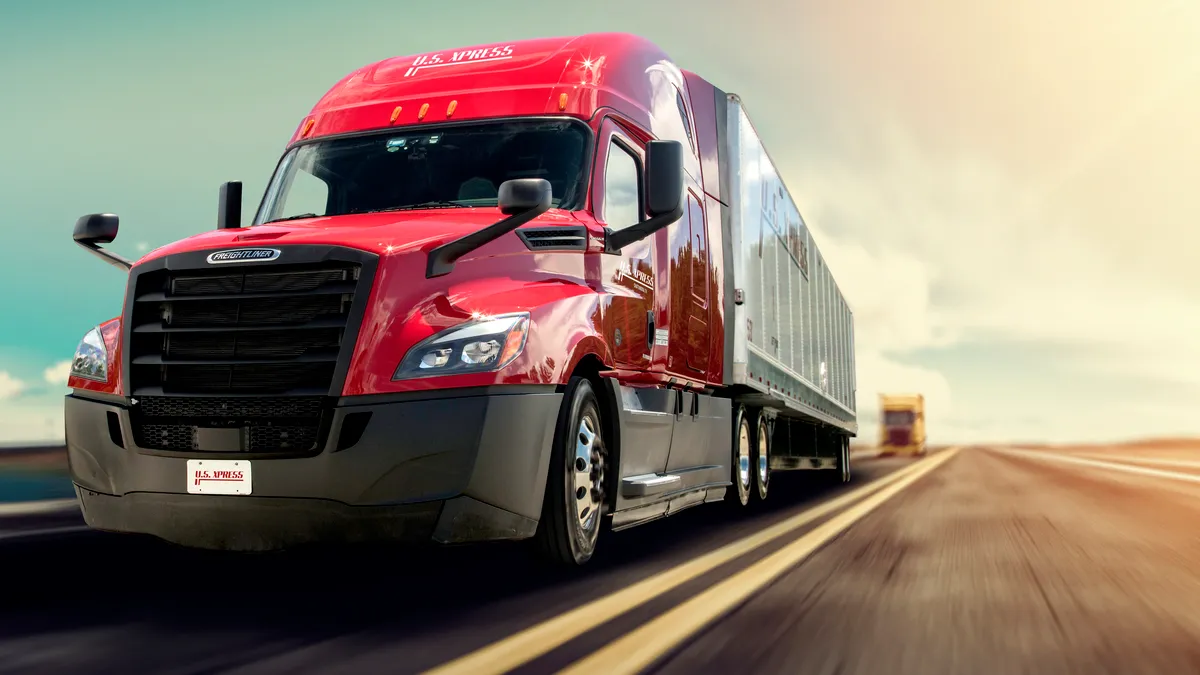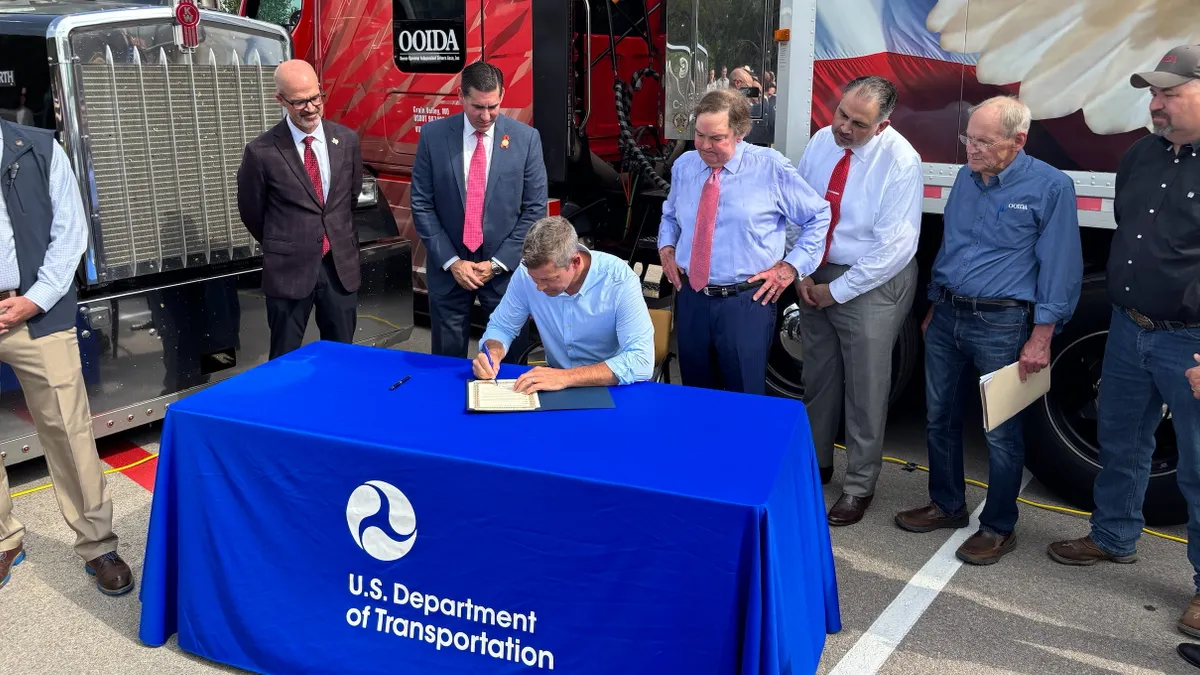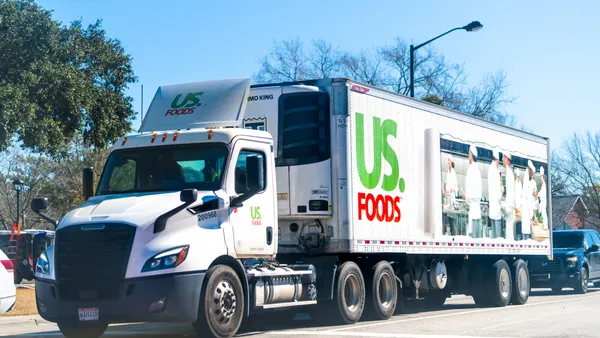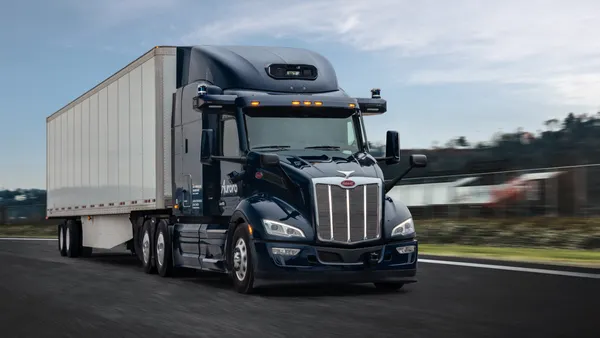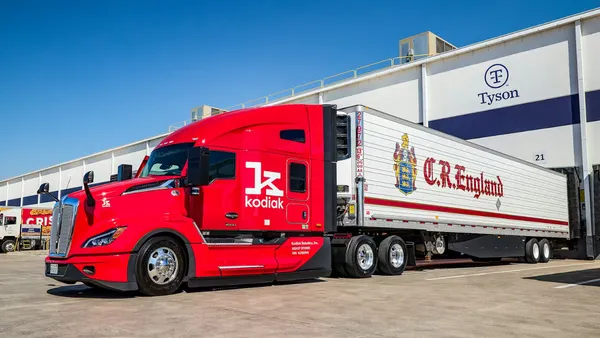Dive Brief:
- U.S. Xpress is growing tractor count and pursuing operational changes within its digital fleet Variant as the carrier works to grow the company "from a nimble startup to a scalable business," CFO Eric Peterson said in a Q1 earnings call Thursday.
- The carrier added 136 tractors to Variant's fleet in Q1, which contributed to a 17% increase in operating revenue over the fourth quarter.
- U.S. Xpress also reorganized Variant's fleet operations over the last few months in a bid to boost driver availability and reduce deadhead. But new workflows led to "an increase in turnover as we transitioned to operating workflows which brought more structure and discipline to our fleet operations," President and CEO Eric Fuller said.
Dive Insight:
Variant, launched in 2019 with just five trucks, has been a key piece of U.S. Xpress' work to improve utilization of its truckload fleet. Artificial intelligence and digital platforms manage, plan and dispatch the fleet — which has now grown to 1,691 trucks, executives said on the earnings call.
But "business began to deteriorate" in the second half of last year, with utilization, turnover and revenue per truck per week headed in the wrong direction, Fuller said in a Q4 earnings call February 9.
Executives have spent the last few months reorganizing the business to add efficiencies and cut costs. U.S. Xpress terminated Variant President Cameron Ramsdell in December, with Fuller noting in a 8-K that the carrier is working to grow Variant and "to improve the value proposition for customers."
U.S. Xpress has since "instituted a more disciplined management approach, focused on key metrics and earnings growth," Peterson said on the Q1 call. Variant will prioritize advancing its freight optimization engine and "returning our product index to previous levels," Peterson said. Technology initiatives not tied to those goals will no longer be funded.
The carrier also identified a number of "broken processes" within Variant's fleet operations, pushing the carrier to roll out new workflow processes and reorganize the fleet's management structure, Fuller said.
But Variant struggled with a spike in turnover as it worked to implement the new workflow. Drivers grew frustrated as trainings kept "a good portion of our people off the floor," leading to a spike in call wait times, according to Fuller. Variant's turnover spiked to 148% at the end of the first quarter, though U.S. Xpress expects those metrics to improve now that drivers are trained.
Remediation efforts are already producing some results, according to Fuller. New workflow processes have led to "significant improvements" in metrics including utilization, deadhead and turnover.
"We continue to believe there is a large customer need for one-way freight movement and that we can implement technology to improve capacity, cost and service levels for our customers while at the same time improving the experience for our professional drivers," Fuller said.


